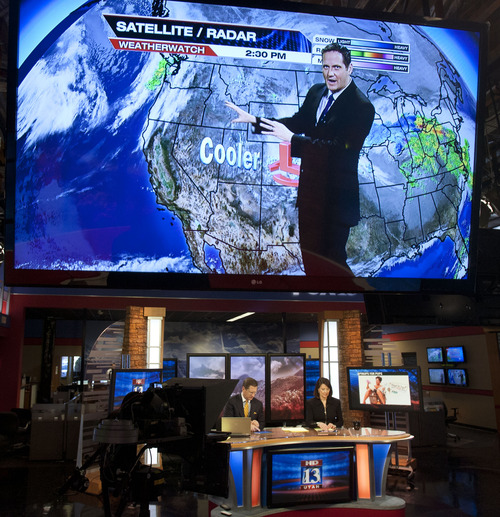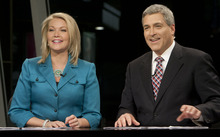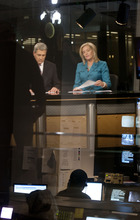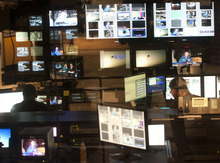This is an archived article that was published on sltrib.com in 2013, and information in the article may be outdated. It is provided only for personal research purposes and may not be reprinted.
KUTV won big by not losing. KSL continued to decline, barely holding off KSTU for second place. And everybody is wondering what happened to Utah TV viewers, many of whom unexpectedly and inexplicably stopped watching during the February sweeps, according to A.C. Nielsen.
In the all-important late-news competition, there was no contest for first place. KUTV-Channel 2 ran away with it, averaging a 12.3 rating — more than second-place KSL-Channel 5 (5.8) and third-place KSTU-Channel 13 (5.7) combined. Channel 2 held steady compared to February 2012; Channel 5 was down 27 percent; Channel 13 was down 7 percent; and KTVX-Ch. 4 (3.3) was down 6 percent.
"We're pretty proud of that 12.3," KUTV's general manager Kent Crawford said. "It's the widest margin of victory over KSL that we've ever had."
These numbers are Nielsen's live plus same-day DVR viewing for the Monday-Friday newscasts from Jan. 30-Feb. 27. They are household numbers; demographics won't be in until mid-March — and local stations will be anxiously waiting to see who finishes second in the demos.
Channel 2 also led the local news ratings in the morning, at midday, and at 4:30 p.m., 5 p.m. and 6 p.m. The only time period in which a KUTV newscast didn't beat the competition was 4 p.m., where Channel 4 averaged a 2.8 to Channel 2's 2.4.
At 10 p.m., KSL continues to point to its weak lead-in from NBC, and during February the network's ratings fell off a cliff. Nationally, NBC finished fifth, trailing CBS, Fox, ABC and Spanish-language network Univision. Locally, NBC's prime-time fell 37 percent from February 2012; KSL's 10 p.m. newscast improved on that lead-in by an average of 150 percent and as much as 1,000 percent on some nights.
"KSL's percentage of growth from the lead-in audience is one of the highest in the country for NBC affiliates," said Tanya Vea, KSL's executive vice president of news and cross-platform development. "That's a great achievement for us, but I realize we will have to continue to increase that growth to regain our No. 1 position."
NBC wasn't the only network to lose viewers, however. Locally, Fox's prime-time was also down 37 percent year to year; CBS was down 18 percent; and ABC was down 11 percent.
There were lower viewing levels across the board, which flies in the face of conventional wisdom that when the weather is bad, TV viewing increases.
In February, KUTV's shares — the percentage of local households actually watching TV at a given time — held steady or increased. But ratings (the percentage of households in the market) declined in several time slots, including mornings and early evenings — as did the ratings of a large majority of the other three stations' newscasts.
"We've called Nielsen and they're looking into that," Crawford said.
All of this matters because local stations set their advertising rates based on the numbers from the sweeps periods. A single rating point in the advertiser-friendly demos (18-49, 25-54) is worth almost $1.5 million per year to a station.
"Revenue follows ratings," Crawford said.
Local late-TV news ratings: February 2013
In the Monday-Friday late-news ratings, KUTV-Channel 2 averaged approximately 112,800 homes. KSL-Channel 5 (53,200) edged KSTU-Channel 13 (52,300) for third place. KTVX-Channel 4 averaged 30,300.































